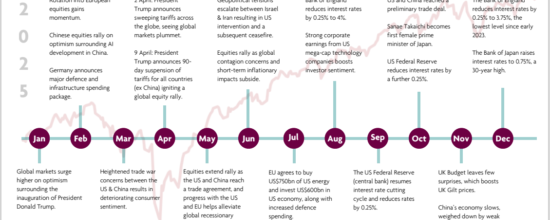Easter Economics
By Andrew Summers
As spring blooms and Easter approaches, it's not just the flowers that are popping up – so are the effects of the high inflationary backdrop we’ve experienced. While Easter eggs and chocolate bunnies might seem immune to economic trends, inflation can sneak into your Easter baskets too. As prices rise, the cost of manufacturing, packaging, ingredients, and labour has all increased too. Some popular Easter eggs have risen in price by around 50% in the past year:

These rather astonishing cost increases reflect broader inflationary trends impacting consumers. The levels of inflation in 2022 and 2023 – driven by the world’s emergence from Covid lockdowns and Russia’s invasion of Ukraine - impacted most developed market economies. The effects of this inflationary move were felt by not only consumers but also investors. Indeed, the on-going battle against inflation and the market’s view on the success of that battle at any given particular time has been the central narrative of investing over the past several years. As prices soared, consumers felt the squeeze on their wallets, while investors sought to understand how this would impact equity and bond markets.
In the tumultuous landscape of 2022, both stocks and bonds found themselves weathering a perfect storm of high inflation, soaring interest rates designed to curb that inflation, and fears of a significant economic downturn as a consequence. When inflation is high, central banks often raise interest rates to cool down spending and curb inflationary pressures. When interest rates rise, borrowing becomes more expensive. This can dampen consumer spending and business investment. Consequently, stocks and other assets exposed to the economic cycle may drop in value as companies face higher borrowing costs and consumers tighten their belts. Bonds, too, can feel the sting of higher interest rates. A bond issued in a low interest rate environment goes down in value when interest rates rise. This is because it is now less attractive to investors than more recently issued bonds with a higher interest rate.
As we ventured into 2023, markets became increasingly optimistic, albeit this didn’t materialise in a straight line. Investors grew more sanguine about market prospects, as inflation peaked, and then fell, and they became increasingly hopeful that the higher interest rates that drove this inflation down could soon start to fall alongside inflation, without precipitating a severe recession.
Looking ahead to 2024, market expectations point towards continued declines in inflation towards central bank 2% targets, and thus investors have begun to set expectations for interest rate cuts, as higher rates look to have done their job. With inflation on a downward trajectory and interest rates poised to follow suit, this outlook should be favourable for bond investors in particular. However, amidst the prevailing optimism, investors should remain mindful of downside risks that could upset expectations. After all, we still have yet to feel the full effect of interest rate rises over the past several years, despite expectations that they will soon start to fall. Staying vigilant to risk and flexible in your portfolio will be paramount to success through the rest of the year.
Most importantly, whilst our focus on easter eggs is on their consumption rather than their production and distribution, we are hopeful that the painful price rises seen over the past few years are behind us.
Happy Easter from all of us at Omnis!
Andrew


